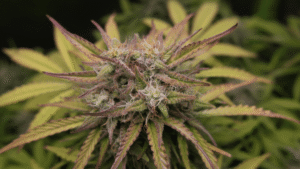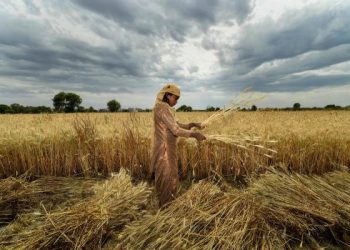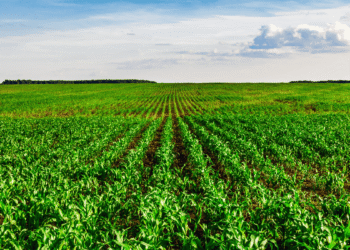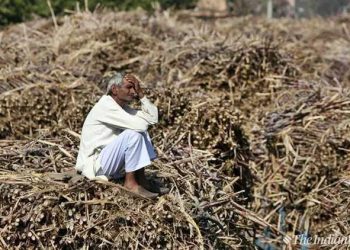Weeds are undesirable plants that grow alongside the main crop and cause disruption in the yield. It feeds on the nutrient that is provided to the plant thereby reducing the nutrient composition that is required for the plant
It’s a matter of concern among farmers that weeds may reduce crop yields. This is because it uses the same nutrients that crop plants use, that too in very similar proportions. They also use resources such as water, sunshine, and space that is meant for crops. It is even possible that weeds and crops have the same nutrient requirements.

The more similar the weed and crop requirements, the more they will compete for those resources.
How does weed affect the crop?
When weeds compete aggressively with crops it reduces their yield. It is most damaging to crop yields if they have some advantage over the crop.
Four factors that should be considered here are
- Density
- Timing
- Size
- Chemistry
When weeds grow in more amounts it becomes a problem, but weed density is not the only concern. For instance, at very high densities, green foxtail plants tend to compete strongly with each other and thus remain very small. These small plants probably have a little competitive effect on the crop even when there are many of them.
At medium densities, green foxtail plants grow larger and can severely reduce crop yields. In this example, a reduction in weed numbers may increase the problem.
The timing of weed-crop competition is important. According to ecologists, a critical period is defined for weed competition. This is the time when it reduces crop yield. When weeds are removed before the critical period, or if they emerge after the critical period then they do not cause any appreciable loss of the yield.

The exact timing of this period is not an “inherent property of the crop”. The time varies for different crops, for different weed species, and under different conditions such as year or location. It is advisable to remove weeds at an early growth period. According to research, early weed removal was found necessary to protect field pea yield.
The relative timing of crop and emergence of weed is very important in determining the magnitude of yield loss from the competition. When it comes to planting competition, generally the one which comes out of the ground first wins the game.
A few examples are competition from wild oat resulted in a 17% yield loss in barley when it emerged five days before the crop compared to a 3% yield loss when wild oat emerged five days after crop emergence.
Weed size is partly a matter of timing. When it emerges before the crop is generally larger and better established than those that grow after the arrival of the crop. This gives them greater access to soil and spatial resources, which is often more damaging to crop yield. Size also varies among species.
For instance, three Canada thistle plants are naturally much larger, and likely to cause more yield loss, than three thyme-leaved spurge plants. Size also depends on plant nutrition, disease, and pests.
Some weeds may limit crop development through chemical means, or allelopathy, either while they are alive, or as they decompose. Some weeds, for example, Canada thistle or quack grass, release chemicals that inhibit their neighbors. This affects their competitive relationship with the crop.
What are the other repercussions?
Weeds can cause problems other than crop yield loss. Some weeds are poisonous and can taint food and feed crops. For example, wild mustard seed cannot readily be removed from canola and can flavor the resulting canola oil if crushed with the crop seed. Stinkweed in feed for dairy cattle produces off-flavors in milk.
When it remains green at harvest, especially those with fibrous stems it can interfere with harvest. The problem varies with both the crop and the weed. A low-growing weed like wild tomato causes very little problem in a cereal crop because most of the plants are below swath height. In a crop like a lentil, chickpea, or bean, severe harvest difficulties may occur.
The low cut means that wild tomatoes are harvested with the crop, and they can stain the pulse and clog the machinery. Weeds like wild buckwheat, that twine through a crop can also be problematic.

Weeds can harbor problem insects and crop diseases. For instance, mustard-family weeds can carry over canola diseases, making rotation a less effective tool for disease management.
Immature weeds can interfere with harvesting operations. Weed seeds in harvested crops cause dockage and increase the risk of spoilage. This can reduce crop value, or increase shipping costs. Weeds in grasslands are generally those that are less palatable.
They increase with grazing because the livestock grazes them less than the more palatable plants. Over time, this reduces range productivity for livestock. Weeds such as smooth brome or purple loosestrife can compete aggressively with native vegetation, and replace it.
Weeds cause many problems. Most importantly, weeds can reduce crop yield. Weeds cause greater crop losses if they occur in large numbers if they get a head start on the crop, if they are especially vigorous, or if they produce allelopathic substances.
Other problems weeds cause include dockage, tainted products such as feed or food, increased numbers of harmful insects or diseases, and more difficult harvest.










